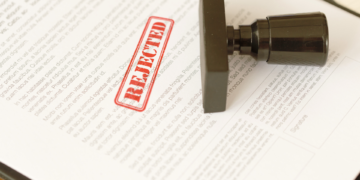In the world of writing, long hours at the desk can lead to physical strain and mental fatigue, impacting your creativity and productivity. Fortunately, integrating desk exercises into your routine can help alleviate these issues, boost your energy, and enhance your overall writing efficiency. In this comprehensive blog post, we’ll explore the top 5 desk exercises designed to maximize your research writing productivity, enhance creativity, and eliminate fatigue.
Seated torso twists are a great exercise for relieving tension in the back and shoulders, which often become stiff from prolonged sitting. This exercise enhances spinal mobility, promotes flexibility, and helps alleviate discomfort caused by hours spent at a desk. By incorporating seated torso twists into your routine, you can improve your posture, reduce back pain, and maintain better focus on your work.

How to Do It
- Sit Up Straight: Begin by sitting upright in your chair with your feet flat on the floor and your back straight. Place your hands on your hips or cross them over your chest for stability.
- Twist to One Side: Gently twist your torso to the right, aiming to bring your left shoulder towards the back of your chair. Hold the twist for a few seconds, feeling the stretch in your back and shoulders.
- Return to Center: Slowly return to the starting position, taking a moment to realign your spine and relax.
- Twist to the Other Side: Repeat the twist to the left, bringing your right shoulder towards the back of your chair. Hold for a few seconds before returning to the center.
Benefits
- Relieves Back and Shoulder Tension: This exercise helps release tightness in the upper body, which is common in individuals who sit for long periods.
- Improves Spinal Mobility: Regular twisting helps increase the flexibility and range of motion in your spine, contributing to better overall posture and reduced risk of back pain.
- Enhances Focus and Comfort: By reducing discomfort and stiffness, seated torso twists can improve your ability to concentrate on tasks and enhance your overall comfort while working.
Practical Tips
- Incorporate Regularly: Perform seated torso twists 2-3 times throughout your workday, ideally every hour or during breaks, to maintain flexibility and relieve tension.
- Avoid Over-Twisting: Twist gently and avoid pushing your body into a position that causes discomfort. The goal is to stretch and relax, not to strain.
- Breathe Deeply: Remember to breathe deeply and steadily while twisting, as this helps enhance the stretch and keeps your muscles relaxed.
Incorporating seated torso twists into your workday can significantly improve your comfort and flexibility, helping you stay productive and focused while mitigating the negative effects of prolonged sitting.
Office squats are an effective way to engage your lower body muscles and stimulate circulation while working at your desk. This exercise helps counteract the negative effects of prolonged sitting, such as poor posture and reduced energy levels, by keeping your body active and your muscles engaged throughout the day.

How to Do It
- Stand Up: Begin by standing with your feet shoulder-width apart, facing your desk or chair for support if needed.
- Squat Down: Lower yourself into a squat position by bending your knees and pushing your hips back as if you’re preparing to sit down, but stop just above the seat or the floor. Ensure your knees stay aligned with your toes and don’t extend beyond them.
- Stand Back Up: Push through your heels to return to the standing position, fully extending your legs.
Benefits
- Strengthens Leg and Core Muscles: Regular squats build strength in your thighs, glutes, and core, helping to improve overall muscle tone and stability.
- Boosts Circulation and Energy Levels: Squatting increases blood flow to your lower body and can help combat feelings of fatigue and sluggishness caused by extended periods of sitting.
- Helps Counteract the Negative Effects of Prolonged Sitting: By incorporating squats into your routine, you can reduce stiffness and discomfort associated with sitting for long durations, promoting better posture and flexibility.
Practical Tips
- Perform in Sets: Aim to do 2-3 sets of 10-15 squats during your work breaks to stay active. This can be done in the office without requiring much space or equipment.
- Maintain Form: Keep your knees aligned with your toes and avoid letting them extend past your toes. Engage your core and keep your back straight to prevent strain and ensure proper form.
By integrating office squats into your daily routine, you can enhance your overall fitness and productivity while mitigating the adverse effects of a sedentary work environment.
Wrist and finger stretches are crucial for alleviating strain caused by extensive typing and mouse use. These stretches help prevent repetitive strain injuries, such as carpal tunnel syndrome, and enhance flexibility in your hands and wrists. By incorporating wrist and finger stretches into your routine, you can reduce discomfort, improve your typing efficiency, and maintain better hand health, which is essential for sustained productivity and comfort at your desk.

How to Do It
- Extend Your Arm: Start by extending one arm straight out in front of you, palm facing up. With your other hand, gently pull back on the fingers of the extended arm to stretch your wrist and forearm.
- Hold the Stretch: Maintain the stretch for 15-30 seconds, feeling the gentle pull along your forearm and wrist. Make sure not to pull too hard, as this could cause discomfort.
- Release and Switch: Slowly release the stretch and switch to the other arm, repeating the same process to stretch the opposite wrist and fingers.
- Finger Flex and Extend: For finger stretches, extend your fingers wide apart and then close them into a fist. Repeat this flexing and extending motion 10-15 times to improve finger flexibility and strength.
- Wrist Circles: To complete the routine, perform wrist circles by rotating your wrists in both clockwise and counterclockwise directions for 10-15 seconds each to promote joint mobility.
Benefits
- Prevents Repetitive Strain Injuries: Regular stretching helps prevent conditions like carpal tunnel syndrome and tendinitis by reducing strain and improving circulation in your hands and wrists.
- Improves Flexibility: Stretching enhances the flexibility of your fingers and wrists, making typing and mouse use more comfortable and reducing the risk of stiffness.
- Reduces Discomfort: By alleviating muscle tension and improving circulation, wrist and finger stretches can reduce discomfort and pain associated with prolonged desk work.
Practical Tips
- Integrate into Your Routine: Perform wrist and finger stretches every hour or during short breaks to keep your hands and wrists flexible and free from strain.
- Use Proper Technique: Ensure you are stretching gently and not overexerting your muscles. Pain or discomfort should be minimal—stretching should feel relieving, not painful.
- Stay Hydrated and Take Breaks: In addition to stretching, remember to stay hydrated and take regular breaks from typing to give your hands and wrists a chance to rest and recover.
Incorporating wrist and finger stretches into your daily routine can significantly enhance your hand health and comfort, allowing you to type more efficiently and reduce the risk of repetitive strain injuries.
The seated hamstring stretch is a great exercise for alleviating tension in your hamstrings and lower back, which can become tight from prolonged sitting. This stretch helps improve flexibility, relieve muscle stiffness, and enhance circulation in your legs, counteracting the negative effects of sitting for extended periods.

How to Do It
- Sit Up Straight: Begin by sitting on the edge of your chair with your back straight and legs extended straight out in front of you. Keep your feet flexed and your toes pointing upwards.
- Reach Forward: Slowly lean forward from your hips while keeping your back straight. Reach towards your toes or as far as you comfortably can, feeling a stretch along the back of your legs and lower back.
- Hold the Stretch: Maintain the stretch for 15-30 seconds, breathing deeply and relaxing into the stretch. Ensure you feel a gentle pull without overextending.
- Return and Switch: Slowly return to the starting position and repeat the stretch on the other leg if you are alternating or continue to stretch both legs if you are stretching them together.
Benefits
- Improves Flexibility: Regularly stretching your hamstrings can improve overall leg flexibility, making it easier to move and reducing muscle stiffness.
- Relieves Muscle Tension: This stretch helps alleviate tension in your hamstrings and lower back, reducing discomfort from prolonged sitting and enhancing overall comfort.
- Enhances Circulation: Stretching improves blood flow to your legs, which helps reduce the risk of circulation issues and promotes better overall leg health.
Practical Tips
- Perform Regularly: Integrate the seated hamstring stretch into your daily routine, ideally every hour or during breaks, to maintain flexibility and reduce muscle stiffness.
- Avoid Overstretching: Stretch gently and avoid forcing your body into a position that causes pain. Aim for a comfortable stretch that gradually increases your flexibility.
- Combine with Other Stretches: Complement the seated hamstring stretch with other leg and lower back stretches to achieve a balanced approach to flexibility and comfort.
Incorporating the seated hamstring stretch into your work routine can help improve your flexibility, relieve muscle tension, and enhance overall comfort, making it an essential exercise for those who spend long hours sitting at a desk.
Neck stretches are essential for relieving tension and discomfort in the neck and upper shoulders, areas commonly affected by prolonged sitting and poor posture. These stretches help improve flexibility, reduce stiffness, and enhance overall comfort, allowing you to maintain better posture and focus during your work.

How to Do It
- Sit Up Straight: Begin by sitting upright in your chair with your back straight and shoulders relaxed. Keep your feet flat on the floor and your hands resting on your lap.
- Tilt Your Head: Slowly tilt your head to one side, bringing your ear towards your shoulder. Hold the stretch for 15-30 seconds, feeling a gentle pull along the side of your neck.
- Apply Gentle Pressure: For a deeper stretch, use your hand to gently apply pressure to the side of your head. Be careful not to pull too hard; the goal is to stretch, not strain.
- Return and Repeat: Slowly return to the starting position and repeat the stretch on the other side. Ensure you perform the stretch gently and evenly on both sides.
- Forward and Backward Stretch: To target different areas of your neck, gently lower your chin towards your chest and hold for 15-30 seconds. Then, tilt your head back to look at the ceiling, holding for the same duration.
Benefits
- Relieves Neck and Shoulder Tension: Regular stretching helps alleviate stiffness and discomfort in the neck and upper shoulders, reducing the impact of prolonged sitting and poor posture.
- Improves Flexibility: Neck stretches enhance the range of motion and flexibility in your neck, making it easier to move and reducing the risk of strain.
- Enhances Posture and Comfort: By reducing tension and promoting better alignment, neck stretches contribute to improved posture and overall comfort during work.
Practical Tips
- Integrate into Your Routine: Perform neck stretches 2-3 times throughout your workday, especially during breaks, to maintain flexibility and alleviate tension.
- Avoid Overstretching: Stretch gently and avoid pushing your head into a position that causes pain. The goal is to feel a comfortable stretch, not to strain your muscles.
- Combine with Shoulder Exercises: Complement neck stretches with shoulder exercises to achieve a balanced approach to relieving upper body tension and improving overall comfort.
Incorporating neck stretches into your daily routine can significantly enhance your flexibility, reduce discomfort, and improve your overall posture, making them a valuable addition to any desk-based workday.





































